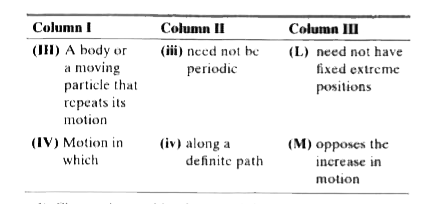In the given table, Column I gives type of motion, Column II gives the path traced and Column III gives other characteristic of the motion.
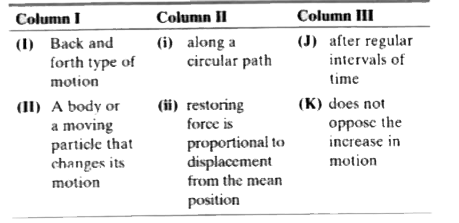

Choose the combination that defines the characteristics of simple harmonic motion.
(I) (iii)(K)
(IV) (iii) (J)
(II) (iii) (M)
(I) (iii) (L)
The correct Answer is:D
Step by step video & image solution for In the given table, Column I gives type of motion, Column II gives the path traced and Column III gives other characteristic of the motion. Choose the combination that defines the characteristics of simple harmonic motion. by Physics experts to help you in doubts & scoring excellent marks in Class 12 exams.
Updated on:21/07/2023Topper's Solved these Questions
- OSCILLATIONSBOOK - RESNICK AND HALLIDAYCHAPTER - OSCILLATIONSEXERCISE - Problems
39 Videos
- MOTION IN TWO AND THREE DIMENSIONSBOOK - RESNICK AND HALLIDAYCHAPTER - MOTION IN TWO AND THREE DIMENSIONSEXERCISE - PRACTICE QUESTIONS (MATRIX-MATCH)
10 Videos
- PHOTONS AND MATTER WAVESBOOK - RESNICK AND HALLIDAYCHAPTER - PHOTONS AND MATTER WAVESEXERCISE - PRACTICE QUESTIONS(Integer Type)
4 Videos
Similar Questions
Knowledge Check
Which of the following is not characteristics of simple harmonic motion?
AThe motion is periodicBthe motion is along a straight line about the mean positionCThe oscillations are responsible for the energy conversion.DThe acceleration of the particle is directed towards the extreme position.In the given table, Column I gives description of waves characteristics, Column II gives their characteristic and Column II shows their graphical representation.

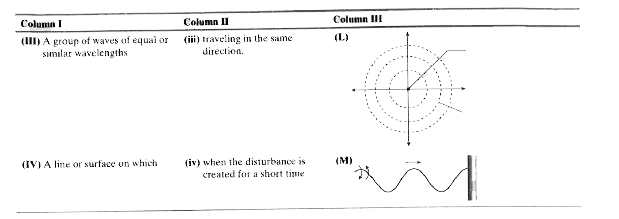
What are the characteristics of a wave front?A(III)(ii) (J)B(IV) (ii) (L)C(II) (iii) (K)D(I) (i) (M)In the given table, Column I gives description of waves characteristics, Column II gives their characteristic and Column II shows their graphical representation.

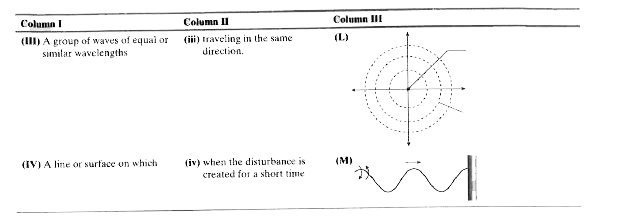
What are the characteristics of a wave pulse?A(I) (iii) (L)B(IV) (ii) (M)C(II) (iv) (J)D(I) (iv) (K)
What are the two basic characteristics of a simple harmonic motion?
View SolutionWhat are the two basic characteristics of a simple harmonic motion?
View SolutionIn the given table, Column I gives type of oscillation, Column II gives change in amplitude of oscillation and Column III gives examples of these types of oscillation.

The combination that defines the features of damped oscillation is
View SolutionIn the given table, Column I gives type of oscillation, Column II gives change in amplitude of oscillation and Column III gives examples of these types of oscillation.
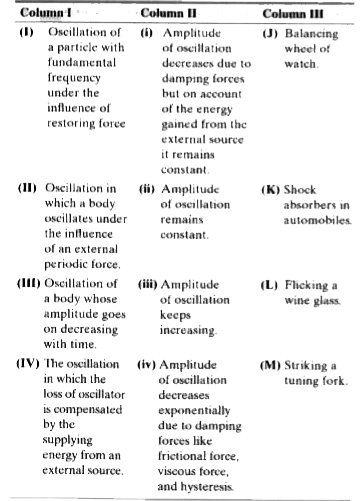
The combination that defines the features of free oscillation is
View SolutionIn the given table, Column I gives type of oscillation, Column II gives change in amplitude of oscillation and Column III gives examples of these types of oscillation.

The combination that defines the features of forced oscillation is
View Solution


